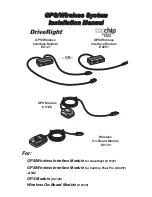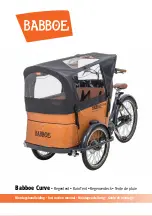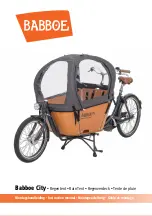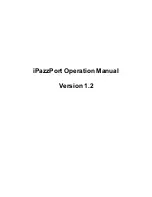
This may affect a number device types in terms of:
-
Connection restrictions
-
Criteria with regard to the maximum permissible mains impedance
*)
-
Criteria with regard to the minimum short-circuit power requirement
*)
*)
at the interface with the public grid
see "Technical data"
In this case, the plant operator or the person using the device should check whether the
device may be connected, where appropriate by discussing the matter with the power
supply company.
IMPORTANT!
Ensure that the mains connection is earthed properly
Protecting your-
self and others
Anyone working with the device exposes themselves to numerous risks, e.g.
-
flying sparks and hot pieces of metal
-
Arc radiation, which can damage eyes and skin
-
Hazardous electromagnetic fields, which can endanger the lives of those using car-
diac pacemakers
-
Risk of electrocution from mains current and welding current
-
Greater noise pollution
-
Harmful welding fumes and gases
Suitable protective clothing must be worn when working with the device. The protective
clothing must have the following properties:
-
Flame-resistant
-
Insulating and dry
-
Covers the whole body, is undamaged and in good condition
-
Safety helmet
-
Trousers with no turn-ups
Protective clothing refers to a variety of different items. Operators should:
-
Protect eyes and face from UV rays, heat and sparks using a protective visor and
regulation filter
-
Wear regulation protective goggles with side protection behind the protective visor
-
Wear stout footwear that provides insulation even in wet conditions
-
Protect the hands with suitable gloves (electrically insulated and providing protection
against heat)
-
Wear ear protection to reduce the harmful effects of noise and to prevent injury
Keep all persons, especially children, out of the working area while any devices are in
operation or welding is in progress. If, however, there are people in the vicinity:
-
Make them aware of all the dangers (risk of dazzling by the arc, injury from flying
sparks, harmful welding fumes, noise, possible risks from mains current and welding
current, etc.)
-
Provide suitable protective equipment
-
Alternatively, erect suitable safety screens/curtains.
Noise emission
values
The device generates a maximum sound power level of <80 dB(A) (ref. 1pW) when idling
and in the cooling phase following operation at the maximum permissible operating point
under maximum rated load conditions according to EN 60974-1.
It is not possible to provide a workplace-related emission value during welding (or cut-
ting) as this is influenced by both the process and the environment. All manner of differ-
ent welding parameters come into play, including the welding process (MIG/MAG, TIG
welding), the type of power selected (DC or AC), the power range, the type of weld met-
al, the resonance characteristics of the workpiece, the workplace environment, etc.
7
EN
Summary of Contents for CU 1100i
Page 2: ......
Page 16: ...16...
Page 17: ...General information 17...
Page 18: ...18...
Page 26: ...26...
Page 27: ...Connections and mechanical com ponents 27...
Page 28: ...28...
Page 31: ...Installation and commissioning 31...
Page 32: ...32...
Page 45: ...Close the cover on the cooling unit connection 3 45 EN...
Page 46: ...46...
Page 47: ...Troubleshooting 47...
Page 48: ...48...
Page 53: ...Care maintenance and disposal 53...
Page 54: ...54...
Page 70: ...70...
Page 71: ...Technical data 71...
Page 72: ...72...
Page 82: ...82...
Page 83: ...83 EN...








































